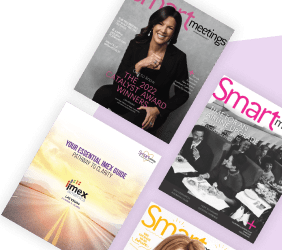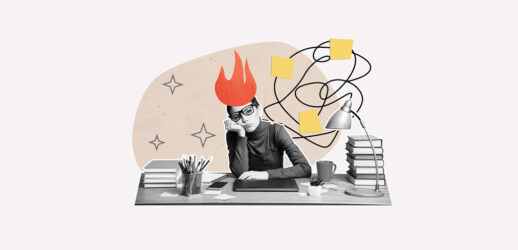Amplify your value with verbal business cards
“So, what do you do?”
It’s a question every attendee is bound to be asked at a conference, reception, venue visit, or even a job interview—as well as just while going about day-to-day life.
Event emcee and keynote speaker Quinn Conyers says there’s a way to turn your answer from a routine, run-of-the-mill response into something that leaves everyone impressed, interested and asking you for your business. That method is called the Verbal Business Card, and once you learn how to create your own, it’s something you’ll always have in your back pocket (even if you forget your paper business cards at home).
Introducing the Verbal Business Card

Conyers says, “I realized many business owners, especially women, talked about what they offered in a way that was passive and non-exciting.” How many times have you heard yourself say, “I’m a meeting planner!” only to hear, “What’s that?” from your friends and family outside of the industry? Whatever you do, introducing yourself by your job title is only step one. With a Verbal Business Card, you level up.
Instead of “I’m a meeting planner,” Conyers suggests your own version of “I am dedicated to the details of events so attendees have a mind-blowing meeting experience that keeps them raving and returning to your conference year after year.”
“When I became an entrepreneur,” Conyers says, “I knew I had to separate myself from others who had a similar product or service in order for my marketing and sales efforts to be effective.”
Enter the Verbal Business Card. Conyers set out to reinvent the traditional elevator pitch, pairing a concise yet comprehensive description of what a person does along with “luxury language” to create a new kind of introduction—one that gets people interested and asking for more.
Once she began using a verbal business card, she says, “I quickly noticed how people perked up when they heard about what I did. They paid attention and paid for what I was offering.”
Don’t Wait to Level Up
Conyers says that having a weak elevator pitch is a bigger problem than many professionals think it is. First and foremost, perception affects your profits. Number two, poor communication costs you clients. Finally, how you interview affects your income.
When people get a blanket-level statement of what you do, they don’t know the unique skillsets, insights and expertise that you, and nobody else, can offer. By giving your standard elevator pitch, you’re giving yourself less credit than you’re due.
What’s Your Verbal Business Card?
Conyers’ Verbal Business Card model emphasizes four distinct characteristics: it is intentional, it is results-driven, it uses psychographics and it uses luxury language.
Let’s break it down. When it comes to luxury language, think attention-grabbing action words. Instead of saying you “help” something, get specific; say you “assist,” “structure,” or “create.”
By implementing psychographics into your verbal business card, you use language that shows you understand the characteristics, attitudes and needs of your prospective clients. What need does your service or skillset fill?
When it comes to being results-driven, meeting planners are adept. Introduce yourself with a results-driven mindset. How does what you offer benefit your client? If you’re a meeting planner, you create experiences that drive lasting connection and inspire customer loyalty—or however you choose to put it! Whatever language you choose, you’ll be successful as long as it reflects what feels authentic to you. So be intentional. The language we use has a major impact on listeners’ perspectives and perceptions—every word matters.
Read More: Shake on It: How to Be a Networking Boss
Watch Yourself Grow
“The impact of a person leveraging a Verbal Business Card verbally and digitally instantly communicates confidence and creativity,” Conyers says. “How we speak about what we are and what we offer becomes elevated, grabbing and keeping the attention of potential clients and customers.”
Ultimately, Conyers says, a successful Verbal Business Card is a conversation-starter.
Professionals—especially women— “must take their communication style off autopilot,” Conyers says. Many people don’t give themselves enough credit, and women habitually quiet themselves. This is a way to shatter that outdated status quo. If you celebrate yourself, you teach others around you just how important and worthwhile it is. If you’re a mentor, set an example for the mentees around you. They’ll go on to do the same. Developing your own Verbal Business Card is a way to celebrate yourself and give yourself a well-deserved pat on the back as you recognize your immense value.
“How we describe what we do at work or as business owners should be rich with energy and excitement, making your mouth your biggest marketing strategy for career or business advancement,” she says.
And, once you begin to use your Verbal Business Card, watch yourself, your service and your company grow. “When we become intentional about how we communicate,” says Conyers,” more opportunities will become available and abundant.”
You’re in the relationship-building business, after all.
Suppose you’re interested in creating your own Verbal Business Card with the guidance of an expert, or you have a rough draft that you’re ready to fine-tune for the biggest impact. In that case, Conyers will be there to help you polish it at the Smart Woman Summit 2025 in Tampa Bay.





